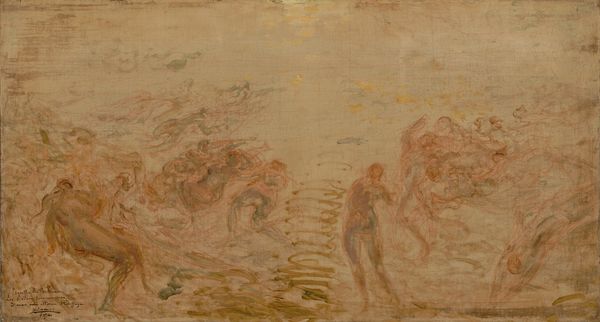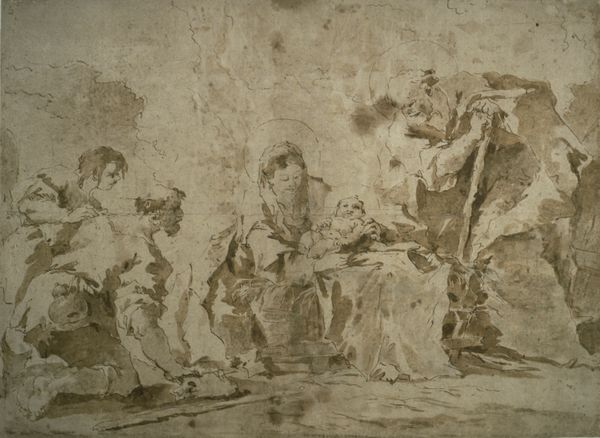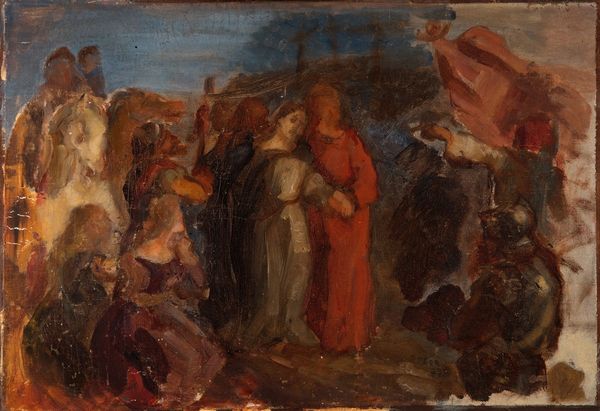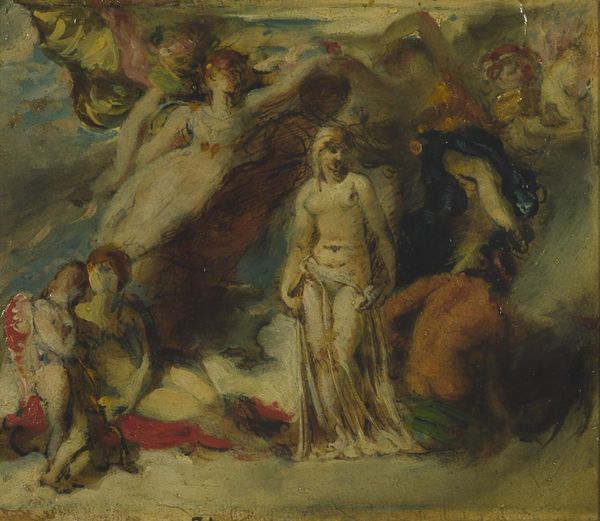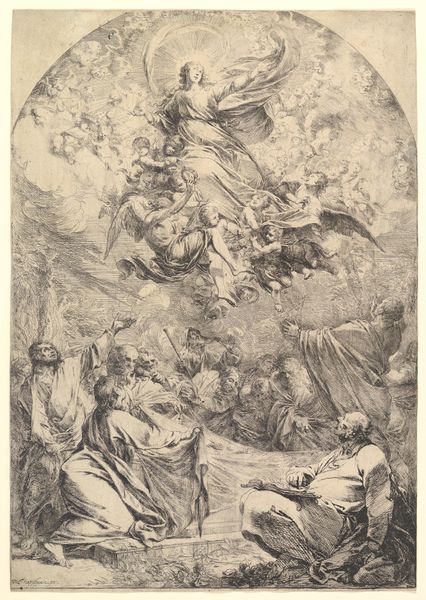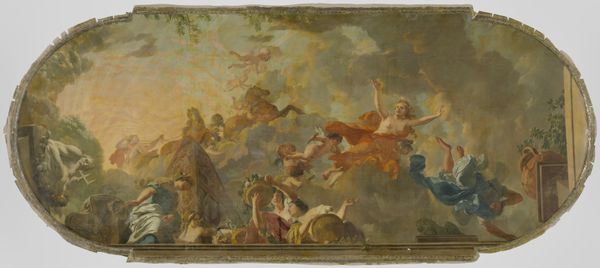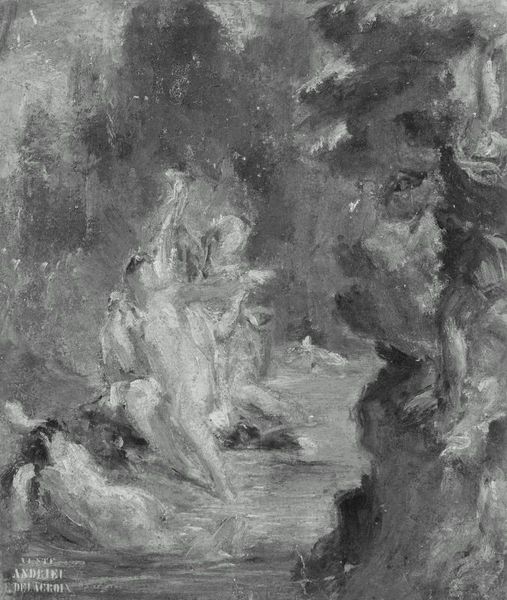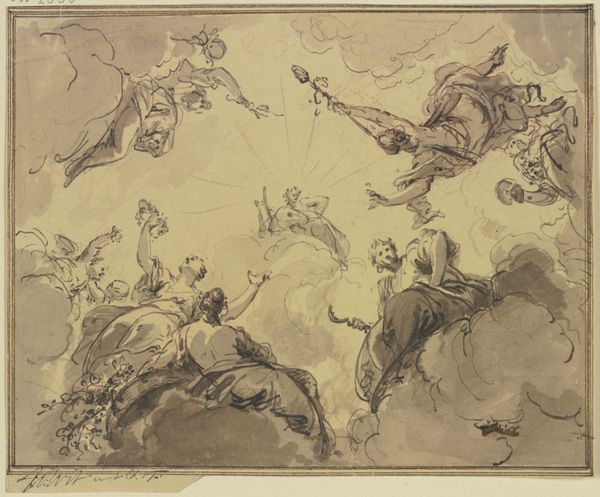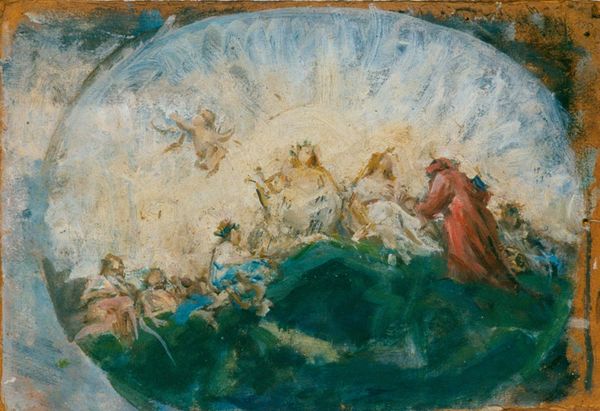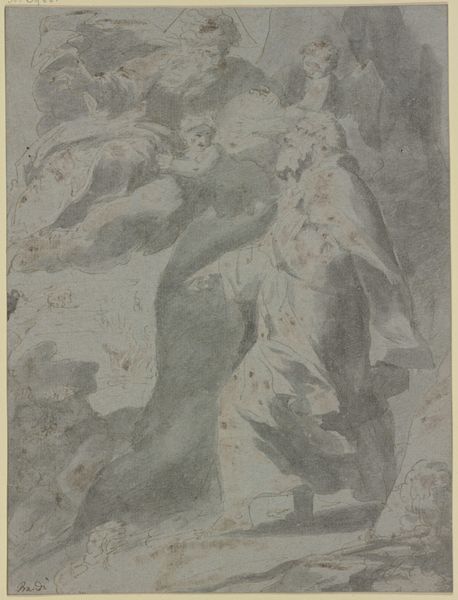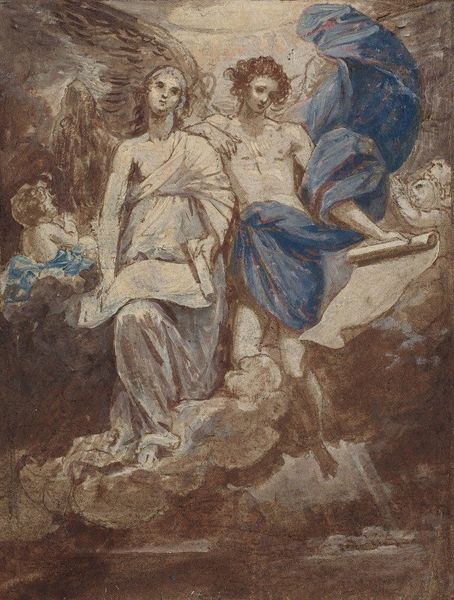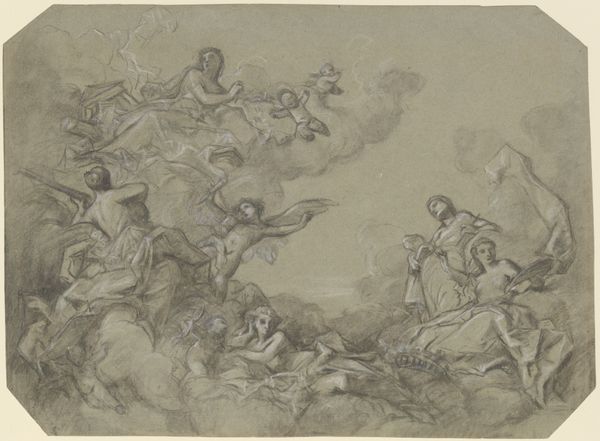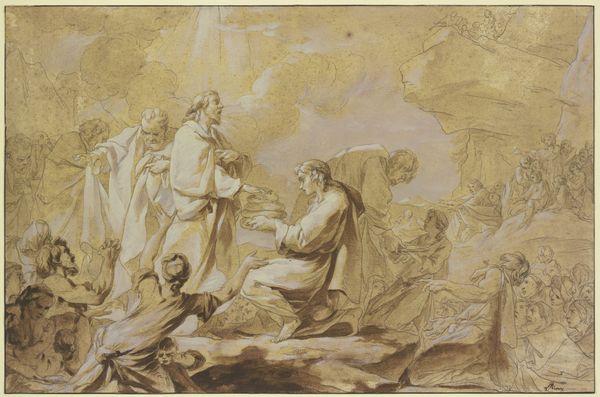
watercolor
#
narrative-art
#
landscape
#
figuration
#
oil painting
#
watercolor
#
romanticism
#
mythology
#
genre-painting
#
history-painting
#
watercolor
Copyright: Public Domain: Artvee
Curator: Robert Smirke's "Prospero Conjuring a Masque for Ferdinand and Miranda," created around 1810, presents a fascinating lens through which to view Shakespeare's The Tempest. Editor: My first impression? Ethereal, almost dreamlike. The watercolor lends a soft, hazy quality to the scene, as if the whole thing's dissolving into the sky. It's pretty melancholic, in a way. Curator: That sense of dissolution is apt, particularly when considered alongside the play’s colonial undertones and the patriarchal structures at play. Prospero's magic, his "art," is essentially a tool of domination. And how do Ferdinand and Miranda fit into this carefully constructed illusion? Editor: Good point. I was just caught up in the pretty colors! Thinking about it, Prospero's a bit of a control freak, isn't he? The masque is, like, a total power move. He’s literally conjuring a performance to manipulate his daughter and her new boo. Creepy. Curator: Exactly. The positioning of Prospero, turned away from the audience, his arms raised in a gesture that could be interpreted as benediction or command. What is the source of his power? Who benefits? We should consider that such displays mask deeper issues of legitimacy. Editor: I see what you're saying. This isn't just some harmless bit of theatre. It's heavy. And even Miranda and Ferdinand seem a little unsure, a little *exposed*. I wonder, were they given consent, or were they thrown in as part of the trick? Curator: Precisely. Considering its historical context, we cannot separate it from broader narratives concerning the ethics of authority and how personal narratives reinforce systemic inequalities. Smirke's painting doesn’t merely depict a scene from Shakespeare; it invites critique of power itself. Editor: Whoa. I'll never look at The Tempest the same way again, which I think means the piece did what any great art should do: leave you a little rattled but somehow brighter. Curator: A testament to art's potential to inspire reflection, isn’t it?
Comments
No comments
Be the first to comment and join the conversation on the ultimate creative platform.
